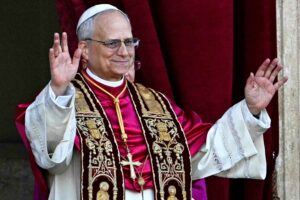CLAIM: The constitution of course says the last to act as president finishes the term in the event of the removal or resignation of the incumbent. Brace!
SOURCE: Twitter
VERDICT: False
Presidents get sick and die. Or in some instances they resign or are forced to. So, what next when this happens? This hasn’t always been clear to many people in the country. The issue of presidential succession is one that has caused confusion in the country over the years. As fate would have it, it was one the country would not have to deal with for 37 years until the resignation of former President Robert Mugabe in 2017.
By then Zimbabwe had gone from the Lancaster House Constitution to the 2013 Constitution, with a lot of amendments in between.
The issue of succession took centre stage on social media when President Mugabe resigned, with some people saying Vice President Phelekezela Mphoko should have taken over and finished that term, here and here.
Even the BBC wrote at the time, ‘According to the constitution his successor should be the current vice-president, Phelekezela Mphoko, a supporter of Grace Mugabe’.
The issue of succession is once again being discussed with elections coming up and people mulling over different scenarios.
Journalist and editor Mduduzi Mathuthu weighed in recently with a thread on ZANU-PF politics. In one of his tweets he made a claim that, ‘The constitution of course says the last to act as president finishes the term in the event of the removal or resignation of the incumbent. Brace!’.
FactCheckZW has gone through the Constitution and rated this claim as false. But first, a little look at the past.
The tale of the two Vice Presidents
Amendment No. 7 (Act 23 of 1987) abolished the system of a Ceremonial President and a Prime Minister and instead introduced the Executive Presidency which subsists today. ZANU PF after the Unity Accord adopted the appointment of two Vice Presidents and this was reflected in the Constitution. The Constitution did not tag them as first or second but just as two vice Presidents.
The constitutional changes meant that executive powers rested with the President, who was directly elected. The President appointed the vice presidents and ministers. The government was not dependent on the confidence of the Parliament, but would have to leave office if a non-confidence vote had been passed with two-thirds majority. The President could appoint one or two Vice Presidents. In case of vacancy in the presidency, a Vice President would, as the main rule, fill the role until a new election could be held.
If there were two vice presidents, the one who was the last to act as President would then act until a new election was held.
RG, MT and no one else – the curious case of Zimbabwe
2008 saw another major addition to the constitution – Amendment number 19, also known as the Interparty Political Agreement. In its Schedule 8: Transitional Amendments and Provisions, the constitution included not only which of three parties were to fill specified positions but it even named the President and the Prime Minister:
Schedule 8 (Constitutional Amendment 19 – Interparty Political Agreement)
20.1.6 Composition of the Executive
(1) There shall be a President, which Office shall continue to be occupied by President Robert Gabriel Mugabe.
(2) There shall be two (2) Vice Presidents, who will be nominated by the President and/or Zanu-PF.
(3) There shall be a Prime Minister, which Office shall be occupied by Mr Morgan Tsvangirai.
(4) There shall be two (2) Deputy Prime Ministers, one (1) from MDC-T and one (1) from the MDC-M.
(5) There shall be thirty-one (31) Ministers, with fifteen (15) nominated by ZANU PF, thirteen (13) by MDC-T and three (3) by MDC-M.
(6) There shall be fifteen (15) Deputy Ministers, with (eight) 8 nominated by ZANU PF, six (6) by MDC-T and one (1) by MDC-M.
(7) Ministers and Deputy Ministers may be relieved of their duties only after consultation among the leaders of all the political parties participating in the Inclusive Government.
Under this constitutional arrangement, in the event of any vacancy arising in the presidency, such vacancy was to be filled by a nominee of the Party which held that position prior to the vacancy arising.
The American Way?
It was during the Government of National Unity that Zimbabwe completed the process of having a new constitution.
This Constitution was signed into law in May 2013, following a referendum in March of the same year.
Succession issues were dealt with in Section 101.
101. Succession in event of death, resignation or incapacity of President or Vice-President
1. If the President dies, resigns or is removed from office —
a. the first rst Vice-President assumes office as President until the expiry of the former President’s term of office;
b. the second Vice-President assumes office as first Vice-President until the expiry of the former President’s term of office; and
c. upon assuming office as President, the former first Vice-President must appoint a qualified person to be second Vice-President until the expiry of the former President’s term of office.
2. If the first Vice-President dies, resigns or is removed from office–
a. the second vice-President assumes office as first Vice-President until the expiry of the former first Vice-President’s term of office; and
b. the President must without delay appoint a qualified person to be second Vice-President until the expiry of the former first Vice-President’s term of office.
This was premised on the running mates clause captured in section 92.
92. Election of President and Vice-Presidents
1. The election of a President and two Vice-Presidents must take place within the period specied in section 158.
2. Every candidate for election as President must nominate two persons to stand for election jointly with him or her as Vice-Presidents, and must designate one of those persons as his or her candidate for first Vice-President and the other as his or her candidate for second Vice-President.
3. The President and the Vice-Presidents are directly elected jointly by registered voters throughout Zimbabwe, and the procedure for their election is as prescribed in the Electoral Law.
4. The qualifications for registration as a voter and for voting at an election of a President and Vice-Presidents are set out in the Fourth Schedule.
5. The election of a President and Vice-Presidents must take place concurrently with every general election of members of Parliament, provincial councils and local authorities.
According to this section, each presidential candidate needed to nominate his vice presidents BEFORE election and would be voted in with them. The vice presidents would, therefore, be voted in with the president instead of being nominated later by him. These would be the successors in case of the resignation, incapacitation or death of the president. For the first time, Zimbabweans would know exactly who was going to take over in the event anything happened to the incumbent.
But. The devil is in the detail
However, clearly laid out as this section was, it wasn’t how President Mugabe’s succession was handled when he resigned.
This was because Sections 92 and 101 were part of those that were only going to come into effect in 2023.
In 2017, the law governing succession was in an oft ignored section in the Sixth Schedule.
The sixth schedule sections were to be in use for a 10 year period from the adoption of the Constitution in 2013.
Section 14 of the Sixth Schedule, relieved presidential candidates from having to nominate running mates in the first election and any other election within ten years after that election. Instead, the elected President would be allowed to appoint up to two Vice Presidents just like under the previous constitution.
The effect of this was that the running mates issue became irrelevant for purposes of the first election. Neither Mugabe nor Tsvangirai or any other candidate for that matter, were forced by the new constitution to nominate their successors. This is why in the July 31 elections, the issue of running mates did not feature, even though it was there in the new constitution.
Sixth Schedule
14. Special provision for election and tenure of first President and appointment of Vice-Presidents
1. Notwithstanding section 92, in the first election and any presidential election within ten years after the first election, candidates for election as President do not nominate persons in terms of that section to stand for election as Vice- Presidents.
2. Without delay the person elected as President in any election referred to in subparagraph (1) must appoint not more than two Vice-Presidents, who hold office at his or her pleasure.
3. Where–
a. one Vice-President is appointed in terms of subparagraph (2), that person is the first Vice-President for the purposes of this Constitution;
b. two Vice-Presidents are appointed in terms of subparagraph (2), the President may from time to time nominate one of them to act as President whenever he or she is absent from Zimbabwe or is unable to exercise his or her official functions through illness or any other cause.
4. Notwithstanding section 101 but subject to subparagraphs (5) and (6), if the person elected President in any election referred to in subparagraph (1) dies, resigns or is removed from office–
a. the Vice-President or, where there are two Vice-Presidents, the Vice- President who was last nominated to act in terms of subparagraph (3)(b), acts as President until a new President assumes office in terms of subparagraph (5); and
b. the vacancy in the office of President must be filled by a nominee of the political party which the President represented when he or she stood for election.
5. A political party which is entitled to nominate a person in terms of subparagraph (4)(b) must notify the Speaker of the nominee’s name within ninety days after the vacancy occurred in the office of President, and thereupon the nominee assumes office as President after taking the oath of President in terms of section 94, which oath the nominee must take within forty-eight hours after the Speaker was notified of his or her name.
6. In the event of the death, resignation or removal from office of a person who is elected president in an election referred to in subparagraph (1) and who did not represent a political party when he or she stood for election, the Vice-President or, if there are two Vice-Presidents, the Vice-President who was last nominated to act in terms of subparagraph (3)(b), assumes office as President.
When President Mugabe resigned, it was then the duty of his party to choose his successor. His party had up to 90 days to do so. Once that was done, the nominee was to be sworn in within forty eight hours.
President Mugabe resigned on the 21st of November and on the 22nd the speaker announced that ZANU PF had chosen President Mnangagwa as their presidential nominee and would be sworn in on Friday, the 24th.
This effectively meant that there would be no need for Vice President Mphoko to be Acting President since ZANU PF did not take up 90 days to decide on a nominee, submitting a name to the Speaker as soon as the former President resigned.
The section that never saw the light of day
Sections 92 and 101 (running mates clause) were to come into effect for this year’s election. But Constitutional Amendment number 2 happened.
The amendment repealed these sections and replaced them with the succession clause from the Sixth Schedule. This means that what was meant to be a temporary arrangement has since become permanent. Or, at least, permanent until the next amendment.
Back to where it all began – Amendment No 2
On 7 May 2021, Amendment number 2 was gazetted and duly came into law. Section 92 was repealed and Section 101 was repealed and replaced with a copy of Section 14 of the Sixth Schedule.
This means that what happened when President Mugabe resigned, is exactly what would happen if the incumbent today resigned, was incapacitated, died or was removed from office. ZANU PF would have to choose whoever the party wants and place him (or her) in the highest office of the country.
Conclusion
The claim that, ‘The constitution of course says the last to act as president finishes the term in the event of the removal or resignation of the incumbent’, has been rated as false. The person who takes over to finish the term would be a nominee from the party. This person might or might not be in the vice presidency or cabinet or anything. The Zimbabwean constitution does not state where the party should pick their nominee from.











